Amongst the compounds given, the one that would form a brilliant colored dye on treatment with NaNO2 in dil. HCl followed by addition to an alkaline solution of β−naphthol is
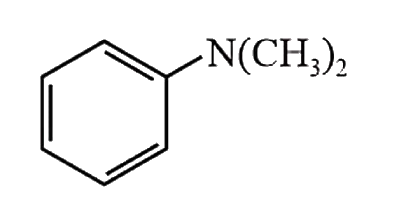
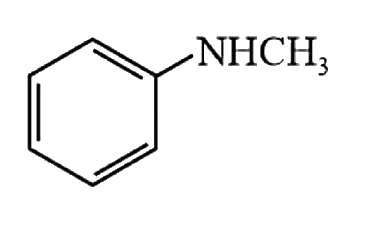
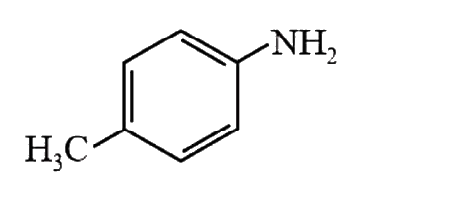
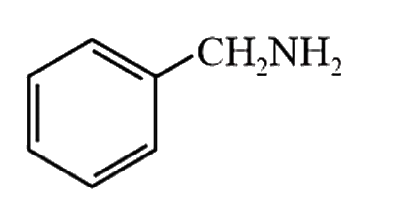
The correct Answer is:C
To solve the question, we need to determine which compound can undergo diazotization with sodium nitrite (NaNO2) in dilute hydrochloric acid (HCl) and subsequently react with beta-naphthol to form a colored dye.
1. Identify the Reaction Type:
The reaction involves diazotization, which is the process of converting an amine (specifically an aromatic amine) into a diazonium salt using NaNO2 and HCl. This occurs at low temperatures (0°C to 5°C).
2. Recognize the Required Functional Group:
For diazotization to occur, the compound must contain an amino group (-NH2) attached to an aromatic ring. This is crucial because only aromatic amines can form diazonium salts.
3. Form the Diazotization Product:
When the aromatic amine is treated with NaNO2 and HCl, it forms a diazonium salt. The general structure of the diazonium salt formed from an aromatic amine can be represented as Ar-N2^+Cl^-, where Ar is the aromatic part of the amine.
4. Coupling with Beta-Naphthol:
The diazonium salt can then react with beta-naphthol in an alkaline medium. The reaction involves a coupling process where the diazonium group (N2^+) replaces a hydrogen atom on the beta-naphthol, leading to the formation of a colored azo dye.
5. Select the Correct Compound:
Among the given compounds, identify the one that contains an aromatic amine structure. This compound will be the only one capable of undergoing the described reactions to form the colored dye.
6. Final Product:
The final product will be an azo dye, which is characterized by the presence of the azo group (-N=N-) linking the two aromatic systems (the original aromatic amine and beta-naphthol).
Conclusion:
The compound that would form a brilliant colored dye upon treatment with NaNO2 in dilute HCl followed by reaction with beta-naphthol is the one that contains an aromatic amine group.
The reaction involves diazotization, which is the process of converting an amine (specifically an aromatic amine) into a diazonium salt using NaNO2 and HCl. This occurs at low temperatures (0°C to 5°C).
For diazotization to occur, the compound must contain an amino group (-NH2) attached to an aromatic ring. This is crucial because only aromatic amines can form diazonium salts.
When the aromatic amine is treated with NaNO2 and HCl, it forms a diazonium salt. The general structure of the diazonium salt formed from an aromatic amine can be represented as Ar-N2^+Cl^-, where Ar is the aromatic part of the amine.
The diazonium salt can then react with beta-naphthol in an alkaline medium. The reaction involves a coupling process where the diazonium group (N2^+) replaces a hydrogen atom on the beta-naphthol, leading to the formation of a colored azo dye.
Among the given compounds, identify the one that contains an aromatic amine structure. This compound will be the only one capable of undergoing the described reactions to form the colored dye.
The final product will be an azo dye, which is characterized by the presence of the azo group (-N=N-) linking the two aromatic systems (the original aromatic amine and beta-naphthol).
The compound that would form a brilliant colored dye upon treatment with NaNO2 in dilute HCl followed by reaction with beta-naphthol is the one that contains an aromatic amine group.
Similar Questions
A colourless liquid A(b.p.184∘C) is sparingly soluble in warm water to which it gives feebly alkaline. On treating with NaNO2 and dil HCl in the cold solution, it yields a solution which reacts with an alkaline solution of β-naphthol to give an orange yellow precipitate. Compound A is -
View SolutionThe products formed in the reaction of cumene with O2 followed by treatment with dil. HCl are :
View Solution
Knowledge Check
Which of the following compounds will form a yellow -coloured oily compound on treatment with NaNO2 and HCl at 0−5∘C ?
A B
B C
C D
D
Under the reaction condition (acidic, basic) the coupling reaction of aryl diazonium chloride with aniline is carried out?
A B
B C
C D
D
A white crystalline solid X give following chemical test :
(i) it liberates CO2 with NaHCO3
(ii) it forms a coloured dye on diazotisation and coupling with β - naphthol
(iii) with Br2 water it forms white precipitate of 2,4,6 - tribromo aniline .
'X' can be identified as :A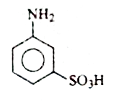 B
B C
C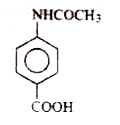 D
D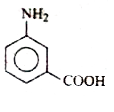
Statement I: Aniline on reaction with NaNO2HCl at 0∘C followed by coupling with β-naphthol gives a dark blue coloured precipitate.
Statement II: The colour of the compound formed in the reaction of aniline with NaNO2/HCl at 0∘C followed by coupling with β-naphthol is due to extended conjugation.
View SolutionA hydrocarbon 'A' (C4H8) on reaction HCl gives a compound 'B', (C4H9Cl) which on reaction with 1 mol of NH3 gives compounds 'C' (C4H11N). On reacting with NaNO2 and HCl followed by treatment with water compound 'C' yields an optically active alcohol, 'D'. Ozonolysis of 'A' given 2mols of acetyldehyde. Identify compound 'A' to 'D'. Explain the reaction involved.
View SolutionA hydrocarbon 'A' (C4H8) on reaction HCl gives a compound 'B', (C4H9Cl) which on reaction with 1 mol of NH3 gives compounds 'C' (C4H11N). On reacting with NaNO2 and HCl followed by treatment with water compound 'C' yields an optically active alcohol, 'D'. Ozonolysis of 'A' given 2mols of acetyldehyde. Identify compound 'A' to 'D'. Explain the reaction involved.
View SolutionA hydrocarbon 'A' (C4H8) on reaction HCl gives a compound 'B', (C4H9Cl) which on reaction with 1 mol of NH3 gives compounds 'C' (C4H11N). On reacting with NaNO2 and HCl followed by treatment with water compound 'C' yields an optically active alcohol, 'D'. Ozonolysis of 'A' given 2mols of acetyldehyde. Identify compound 'A' to 'D'. Explain the reaction involved.
View SolutionWhich one of the following compounds on reaction with Na2O3 in alkaline medium gives yellow colour solution?
View Solution
